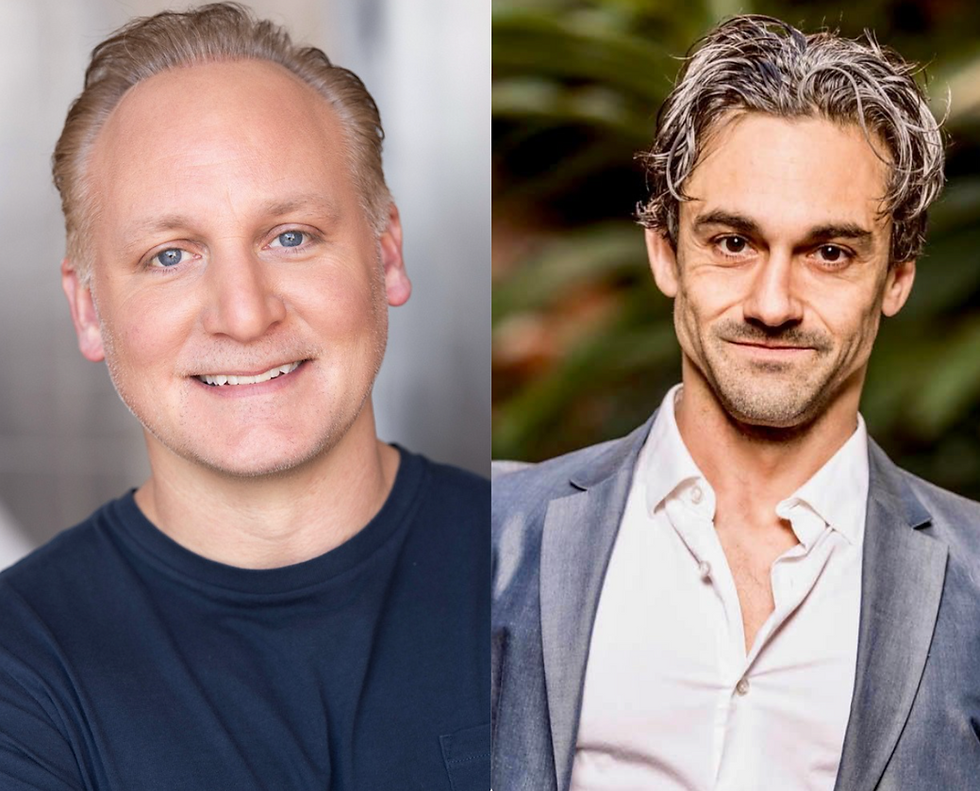In Dialogue: Native American Heritage Month with Sam Shoulder
- August Sorenson

- Nov 14, 2023
- 4 min read
Updated: Nov 17, 2023
An enrolled member of the Oglala Lakota tribe, actor Sam Shoulder moved to Los Angeles in 2018 to study at The American Academy of Dramatic Arts, graduating in 2020. He does not pursue the arts for himself but for his community–for his people. In honor of Native American Heritage Month, The Academy Pages spoke with Sam about representation in the industry, his heritage, and the ever-evolving path forward.
The conversation has been edited for length and clarity.
Tell us about your heritage. How has it shaped you into the artist that you are today?
The hardest thing, when it comes to a cultural standpoint, is the idea of “How Native are you?” I didn’t grow up culturally connected to my heritage or roots. Some people who practice the culture can also speak the language…that was a challenge where I grew up. It is a part of who I am, but not everyone shares a similar background. Does that answer your question? I know it’s a roundabout way to answer it. [Laughs.]
It does. But is there more you might be able to share?
Being around people who spoke the language was hard when I could not participate in the conversation. In the last few years, I’ve discovered and created my identity. There’s a need for more representation–for equal representation. Those cultural connections…it’s a part of who I am. Every Native American grew up with a different experience of their roots, and it has shaped everyone differently.
I love all this. Can we zero in on Sam for a moment? Tell me what drives you.
I think I’m more in tune with some things. The culture on my shoulders drives me…I’m doing this for my people, for my culture. We must be represented, no matter how hard it gets to achieve that goal. When asked why I do this, that’s always been my answer: representation for my people. As an artist, that goal helps me realize this is much bigger than myself. I’m a part of the whole, not an individual, not an island, and that’s a core tenet of my people: the need for community.
In what ways can Hollywood or the American theatre benefit from broader diversity?
Every culture can learn from outside influence. With so much of the canon coming from Western influences and writers, bringing Native voices would help it broaden. Anything outside the norm, any new influence, can benefit a tradition. It can test it. Recently, there’s been a bigger push for diversity, and an influx of BIPOC artists to Hollywood has accompanied this. There hasn’t always been equal representation; there’s been a huge disparity in influence on stage and screen. It still isn’t there yet. There’s a pattern in the right direction, a shift forward, but there’s still a long way to go. When I talk about these things, it’s important to remember that these people, these cultures, precede the US. My hometown wasn’t always great at teaching history, and seeing a play can create some dialogue…don’t be afraid to be “ignorant.” Ignorance is a threat when you’re willingly avoiding knowledge; otherwise, it’s a bit too aggressive of a term. [Laughs.]
Are there some projects that have been especially inspiring to you?
Things indigenous-led, especially with a female director. The show Reservation Dogs comes to mind. It was one of those shows that portrayed indigenous people in a way that wasn’t…“Wild West.” It wasn’t historical, but it authentically depicted indigenous lives today. So often, movies about indigenous lives aren’t produced or directed by them, which can undercut the story.
What does that say about the industry? What reality might it expose?
With Reservation Dogs, many inside jokes were specific to indigenous people. Things that couldn’t have been included without it being done with so many indigenous artists, you know? There were even jokes that I didn’t understand! [Laughs.] In Los Angeles, people first see that I’m Native American–it’s often the first thing they identify. Back home, that wasn’t the case. I was a person. I was Sam amongst my people. I think that’s what Reservation Dogs did so well: create an environment where you’re seeing indigenous people living their lives. So many roles are still stereotypical outside of that show, so it’s great when we’re allowed to be artists playing a part.
In the last five years, what changes have you observed, and where do we go from here?
When I first started, I was in South Dakota. There were almost no auditions for Native American people anywhere–the nearest market was Denver. The options were to move to New York or Los Angeles at the time. During the pandemic, there was a huge shift into self-tapes; everything went online. This was exciting and terrifying; it was a new challenge but so convenient. It allowed people to send in tapes from anywhere in the world. As the roles for Native actors increased, the talent pool did, too. Anyone in the US can audition for these roles. It’s an exciting new generation. Moving forward, I think it’s important to continue to recognize that we are artists and that Indigenous artists have a place in the fabric of Hollywood and American theatre. We will be represented.
Find more about Sam's career on IMDb.




Comments